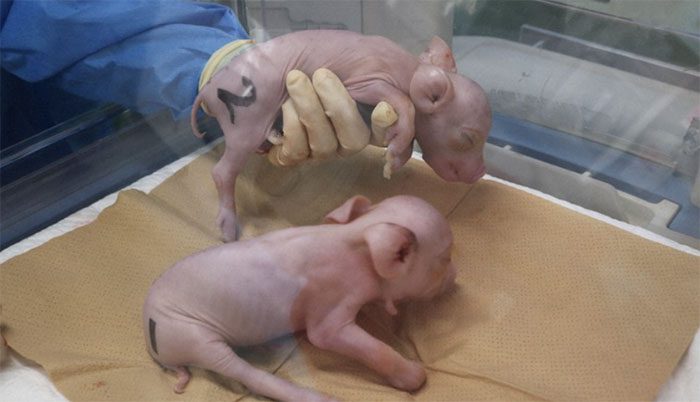The first genetically modified pigs intended for organ transplantation for humans in Japan were born on February 11.
This breakthrough aims to overcome species barriers and is expected to lead to a new class of transplant drugs.
According to the Mainichi newspaper on February 14, research institutions and healthcare organizations in Japan plan to begin transplantation experiments on monkeys soon and start clinical trials on humans in 2025.

Genetically modified pigs are expected to provide transplant organs for humans in Japan – (Photo: PorMedTec Co).
Japan has produced its first batch of genetically modified pigs for organ transplants.
The joint venture company PorMedTec Co. (based in Kawasaki, Kanagawa Prefecture), a subsidiary of Meiji University, used cells from genetically modified pigs imported from the American biotechnology company eGenesis to produce cloned piglets.
Typically, the human body has a strong rejection response to transplanted organs from other species.
However, the cells from these genetically modified pigs have had 10 genes replaced to prevent this rejection response.
Additionally, about 50 genes have been inactivated to eliminate potential risks to humans from pig genes.
Research groups at universities and medical institutions in Japan plan to transplant kidneys from these genetically modified pigs into long-tailed macaques to observe the survival time of these monkeys, as well as the functionality of the transplanted organs. The research teams also anticipate human clinical trials.
In 2022 in the United States, a patient with heart disease received a heart transplant from a pig. The heart function showed signs of recovery, but the patient died two months later from unknown causes.
In September 2023, there was a second case of a pig heart transplant in the United States. This patient also died nearly six weeks later.
With the genetically modified pigs recently born in Japan, several monkeys that received kidney transplants from these pigs have been reported to survive for over two years. This result was published in the British scientific journal Nature.



















































